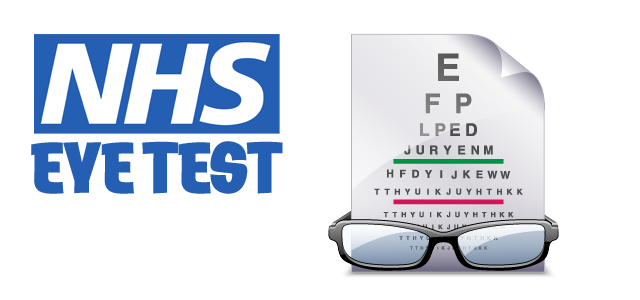![]()
Jack Brown Eyecare, Edinburgh Opticians.
Email: info@jbeyecare.com
Jack Brown Eyecare Branches
30 Elder Street, Edinburgh EH1 3DX
Tel: 0131 557 3531
Open in Google Maps
Westside Plaza, Edinburgh EH14 2SW
Tel: 0131 442 2333
Open in Google Maps

What is colour vision deficiency?
The nerve cells which receive and process light at the back of the eye - the retina - are of two main types: the rod-like cells, which operate at night and the cone-like, which allow us to see fine detail and colours by day. Three different chemicals can be found within the cone nerve cells, so that each cone responds best to red, green or blue light in a similar manner to colour television. The fault of defective colour vision lies in one set of chemicals, usually those controlling principally either red or green colours.
It is not generally realised that defective colour vision can range from near- normal appreciation of hues, where the chemical within the "red" or "green" cones is only slightly altered, to a medium degree of confusion where the chemical is altered considerably. For the first group, pale colours will give most common difficulties in identification, and deep colours will be confused if the lighting is poor, or the person is tired or under pressure to make a quick decision of colour name.
Only a third of those with colour vision problems have the more severe form where one sort of chemical is completely lacking and very strong colours are frequently confused, though still within a limited range of up to ten main colours. Complete colour deficiency, where all colours are seen as varying shades of black and white is extremely rare.
Why are more men than women colour deficient?
Like many other medical conditions, defective colour vision may be inherited and carried through the mother (whose vision will be apparently normal) to the son. Frequently, brothers within the same family are affected, but this is not always the case as there is only a 50/50 chance the sons of "carriers" will have altered colour vision.
A female can only inherit defective colour vision if her father has the problem and her mother is a carrier or herself colour deficient. The pattern of inheritance is simple, so future generations of colour blind individuals can be easily predicted.
Will Inherited colour deficiency change with age?
No. The inherited alterations to Colour vision involve both eyes and remain stable through life.
Can one develop colour deficiency?
Yes, but not in the inherited form. A whole range of prescribed drugs, systemic conditions such as diabetes, multiple sclerosis and cardiovascular diseases (including high blood pressure), some liver diseases and many eye diseases, can affect the cone receptor nerves or the nerve pathways from them to the brain. In these cases, colour vision may be temporarily or permanently altered, often in one eye at a time. Difficult in colour discrimination may be noticed with other visual problems, such as overall blurring of near or distance vision, or gaps in the field of vision. Women and men are equally at risk.
Drugs prescribed for arthritis, malaria, depression and heart disease can, on occasion, significantly impair colour vision. Even long-term use of aspirin can change colour perception. Tobacco and alcohol taken in excess can have similar effects. Many industrial chemicals can permanently alter our appreciation of colours. Glaucoma, cataract and most eye problems affecting the retina or nerve pathways to the brain can give gradually worsening problems with many different colours, including blues and greens.
Since colour vision changes can be an early sign of disease or a side effect of prescribed medication, it is important that you consult your doctor if you are aware that your appreciation of colours is changing.
Can colour vision deficiency be a handicap?
Colour is relevant to many aspects of everyday life and some jobs and careers do involve some degree of colour identification. Colour coding is important in industry and for signal lights, so it is understandable that British Rail and the London Underground cheek for defective colour vision at a pre-employment medical. Many large companies involved with printing inks, textiles, paints and electronic components screen prospective employees and may refuse entry for certain jobs if colour perception is inadequate. Despite the introduction of instruments for colour matching, the human eye is still the most sensitive instrument of all. Restrictions in some branches of the Services, Police Force and Civil Service are often strongly enforced.
Although some people with abnormal colour vision are not denied a driving licence, there have been a few cases of death caused by people with faulty colour perception driving through a red traffic light. In some countries, law prohibits colour defective people from driving commercial vehicles.
Colour also has a special place in the child's world, being used as an aid to learning. Studies have failed to show any educational handicap resulting from faulty colour vision, but parents, GPs and teachers may not necessarily be well-informed on this subject. It is always sensible to inform teachers if a child is known to have difficulty in identifying colours.
Can anything be done to correct colour deficiency?
Although nothing can replace a faulty mechanism in the retina of the eye - which is essentially a part of the brain - many colour defective people do learn ways of compensating for their difficulty with experience and help from relatives and colleagues. It is important that good lighting is always available.
Many people find help, albeit limited, identifying certain colours that they would otherwise misname, with the aid of a small red or red-mauve filter of transparent plastics or glass held in front of the eye. Often red cellophane can help. This is best tried at home with a selection of transparent coloured materials, but it is not usual to prescribe tinted spectacles for this purpose, since only one eye must use the filter. A red tinted contact lens can be worn in one eye to help colour recognition, but the results cannot be guaranteed. There is no way of restoring the lost sensation or appreciation of colour.
How can I have my colour vision tested?
Straightforward clinical tests have been devised to screen for defective colour vision, most taking only a matter of minutes. These involve reading coloured numbers from a book or arranging coloured papers in order, or naming coloured lights. Optometrists can give such a test as part of an eye examination. Some school medical examinations may include colour vision tests. If a detailed evaluation of colour vision is required, a professional opinion should be sought.
For the individual, the best advice is that if there is the slightest reason for doubt, have an eye examination that includes a test for colour vision.
text size >












